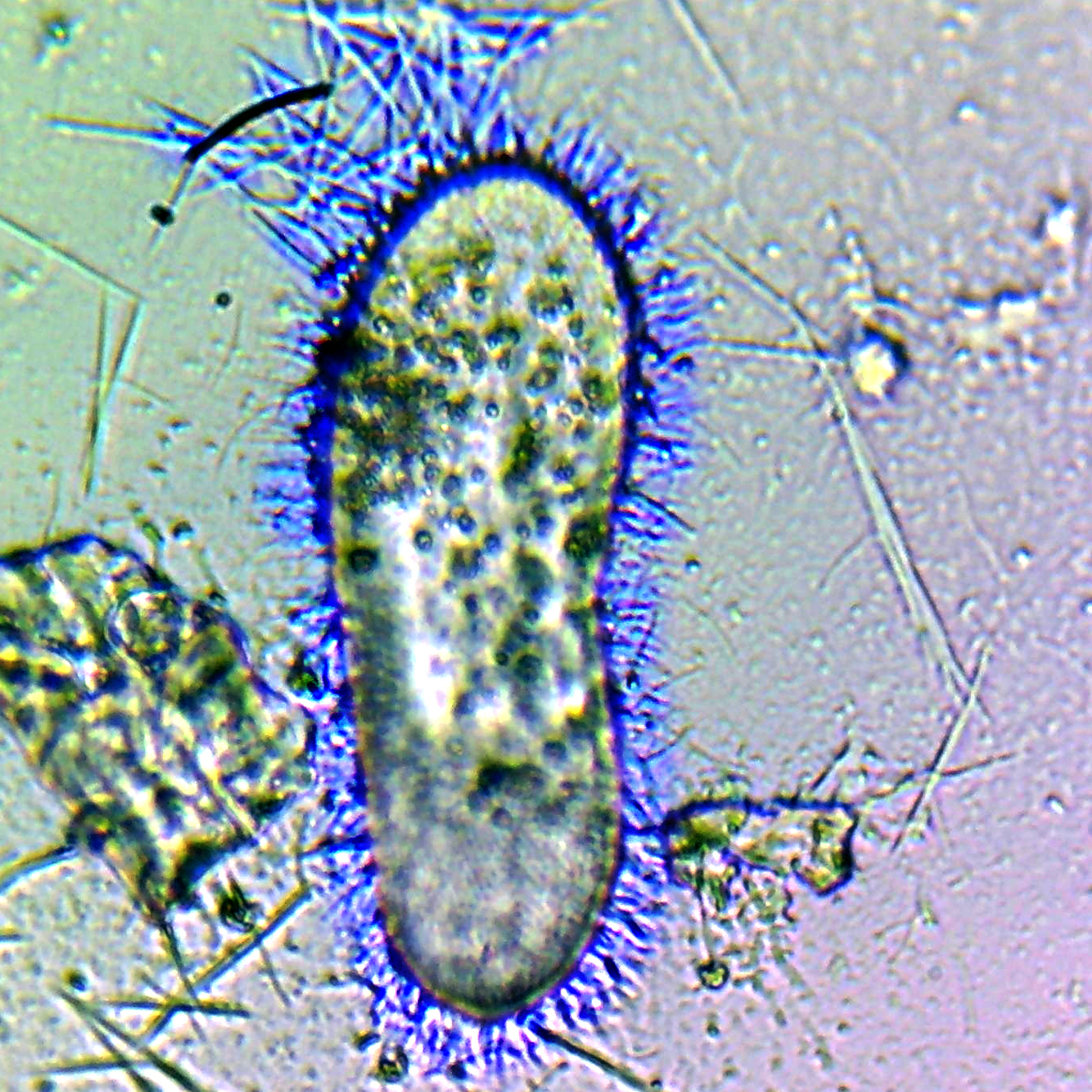extrusome on:
[Wikipedia]
[Google]
[Amazon]
Extrusomes are membrane-bound
 Within the
Within the
Image: extrusome (labeled EX)
Organelles {{Protist structures
organelles
In cell biology, an organelle is a specialized subunit, usually within a cell, that has a specific function. The name ''organelle'' comes from the idea that these structures are parts of cells, as organs are to the body, hence ''organelle,'' th ...
found in eukaryotic
The eukaryotes ( ) constitute the Domain (biology), domain of Eukaryota or Eukarya, organisms whose Cell (biology), cells have a membrane-bound cell nucleus, nucleus. All animals, plants, Fungus, fungi, seaweeds, and many unicellular organisms ...
cells that are capable of discharging material contained within to the exterior of the cell. Due to the diversity in structure and function, it is unlikely that different types of extrusomes are homologous.
Some notable extrusomes include mucocysts, which discharge a mucous mass sometimes used in cyst formation, and trichocysts, which discharge a fibrous rod. Nematocysts, the stinging structure found in Cnidarian animals, could be considered extrusomes as well, though those functions are performed by differentiated cells rather than organelles. Other extrusomes include the ancoracyst, a specialized extrusome found in the Provoran eukaryote ''Ancoracysta twista'' used to immobilize prey.
Extrusomes and their functions are currently not well understood; many of their supposed functions are in doubt.
Function
Ciliates
 Within the
Within the ciliates
The ciliates are a group of alveolates characterized by the presence of hair-like organelles called cilia, which are identical in structure to eukaryotic flagella, but are in general shorter and present in much larger numbers, with a different ...
group, numerous extrusomes–primarily trichocysts–are distributed all across the body. In ''Paramecium
''Paramecium'' ( , , plural "paramecia" only when used as a Common name, vernacular name) is a genus of eukaryotic, unicellular ciliates, widespread in freshwater, brackish, and Ocean, marine environments. Paramecia are often abundant in stagna ...
'', there was found to be approximately 8000 extrusome structures per cell. Each of these structures is capable of responding to external mechanical or physical stimuli, upon which the structure will rapidly eject a sharp projectile to serve as a defense mechanism. Expulsion of the trichocyst is generated by a change in the structure of proteins
Proteins are large biomolecules and macromolecules that comprise one or more long chains of amino acid residues. Proteins perform a vast array of functions within organisms, including catalysing metabolic reactions, DNA replication, re ...
within the shaft of the projectile that drastically increases its length.
Predatory ciliates in the classes Prostomatea
Prostomatea is a class of ciliate
The ciliates are a group of alveolates characterized by the presence of hair-like organelles called cilia, which are identical in structure to flagellum, eukaryotic flagella, but are in general shorter and pr ...
and Litostomatea have a type of extrusome called a toxicyst. As their name suggests, when extruded, the toxicyst will release toxic material to inhibit the ciliate’s prey. Haptocysts are found in the class Phyllopharyngea and are found at the tips of feeding tentacles. Prey caught by the tentacles will be held in place when the extrusome injects its contents into it, pinning it in place and releasing enzymes to break the prey down.
Mucocysts are found in ciliates and flagellates
A flagellate is a cell or organism with one or more whip-like appendages called flagellum, flagella. The word ''flagellate'' also describes a particular construction (or level of organization) characteristic of many prokaryotes and eukaryote ...
. They secrete a mucus directly onto the cell surface that often leads to the formation of cysts. This additional layer may serve as a barrier against foreign substances; it may also be re-ingested alongside any organic matter that was captured within.
In other groups
Similar to ciliates, mostdinoflagellates
The Dinoflagellates (), also called Dinophytes, are a monophyletic group of single-celled eukaryotes constituting the phylum Dinoflagellata and are usually considered protists. Dinoflagellates are mostly marine plankton, but they are also commo ...
have trichocysts capable of ejecting a sharp spindle. Though long believed to be genetically dissimilar, recent studies of ribosomal DNA
The ribosomal DNA (rDNA) consists of a group of ribosomal RNA encoding genes and related regulatory elements, and is widespread in similar configuration in all domains of life. The ribosomal DNA encodes the non-coding ribosomal RNA, integral struc ...
have yielded evidence towards them being more related despite the physiological differences.
Cryptomonads, a group of algae, have a type of extrusomes referred to as ejectosomes. These structures have two connected spiral ribbon-like structures held under tension. When placed under stress, whether mechanical, chemical, or light, the ejectosome will discharge, propelling the protist away from the disturbance.
Cnidocyst, the organelle associated with the stinging cnidocyte cells of jellyfish
Jellyfish, also known as sea jellies or simply jellies, are the #Life cycle, medusa-phase of certain gelatinous members of the subphylum Medusozoa, which is a major part of the phylum Cnidaria. Jellyfish are mainly free-swimming marine animal ...
and other Cnidarians
Cnidaria ( ) is a phylum under kingdom Animalia containing over 11,000 species of aquatic invertebrates found both in fresh water, freshwater and marine environments (predominantly the latter), including jellyfish, hydroid (zoology), hydroids, ...
, are another type of extrusome. When the hair-like trigger called the cnidocil receives a chemical or mechanical input, the coiled hollow tube within is ejected, piercing and injecting the target organism with toxin. The time it takes for the entire process to occur is only a few microseconds, and has been measured to reach an acceleration of approximately 40,000 g.
References
External links
Image: extrusome (labeled EX)
Organelles {{Protist structures